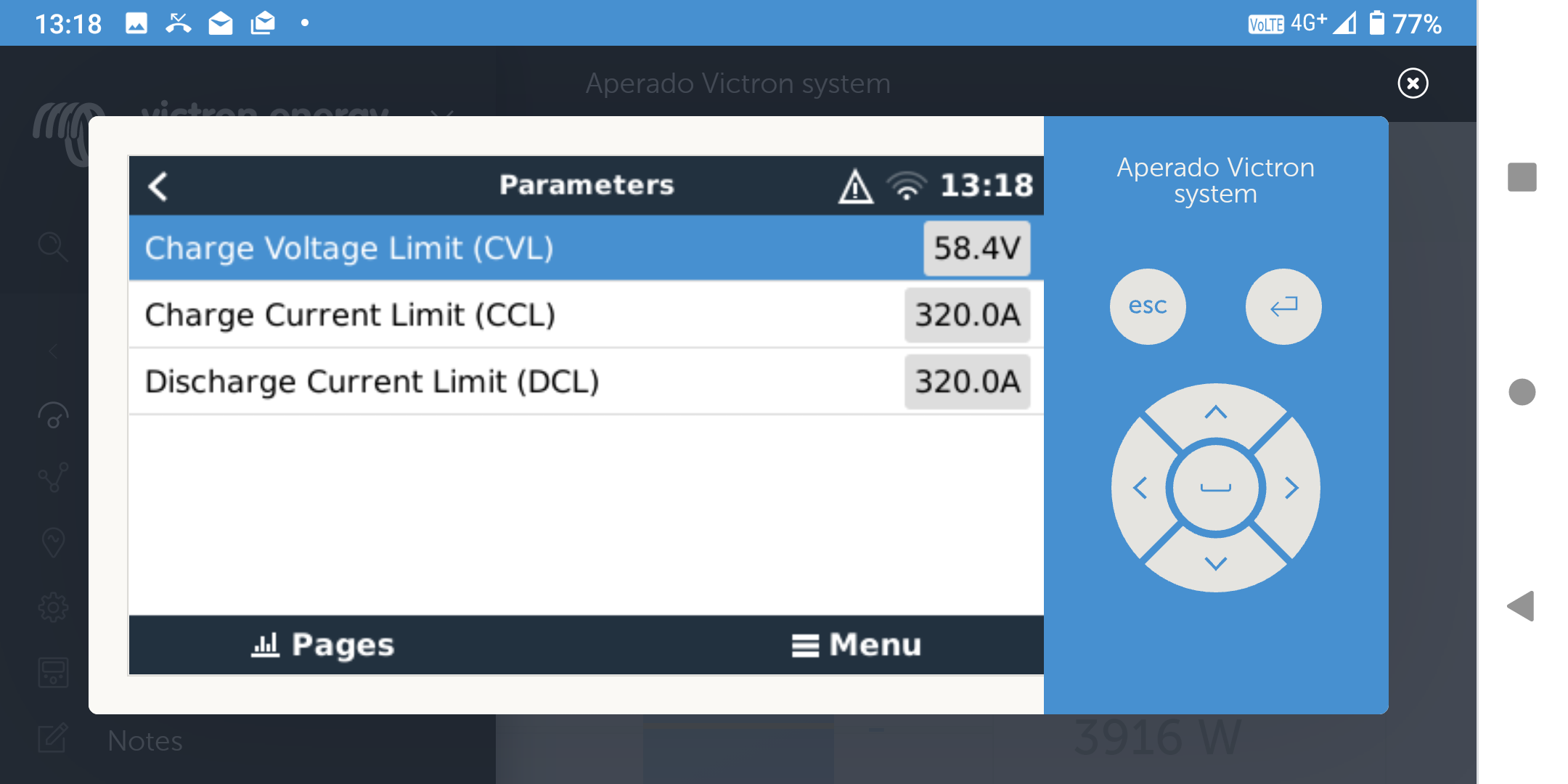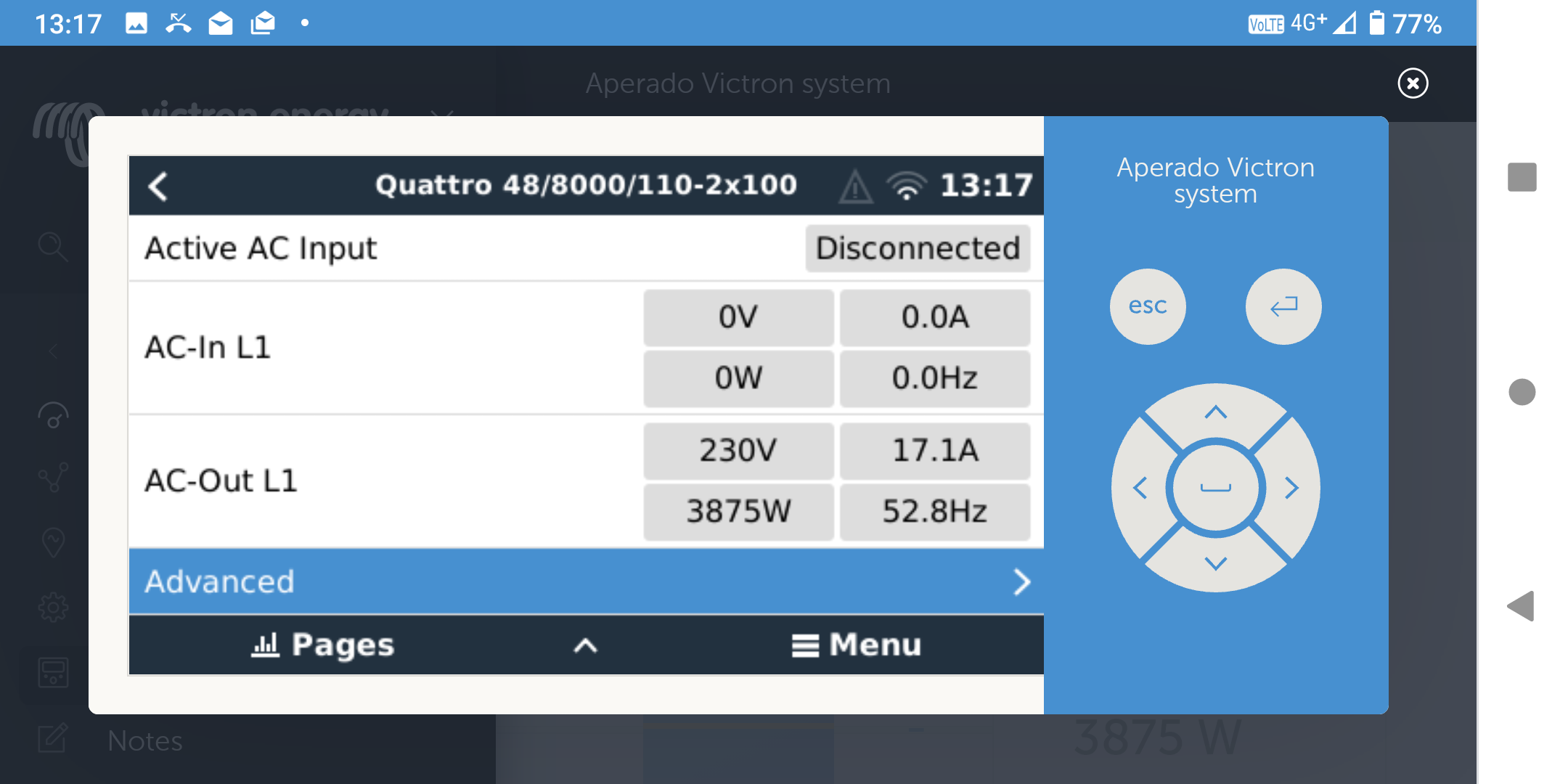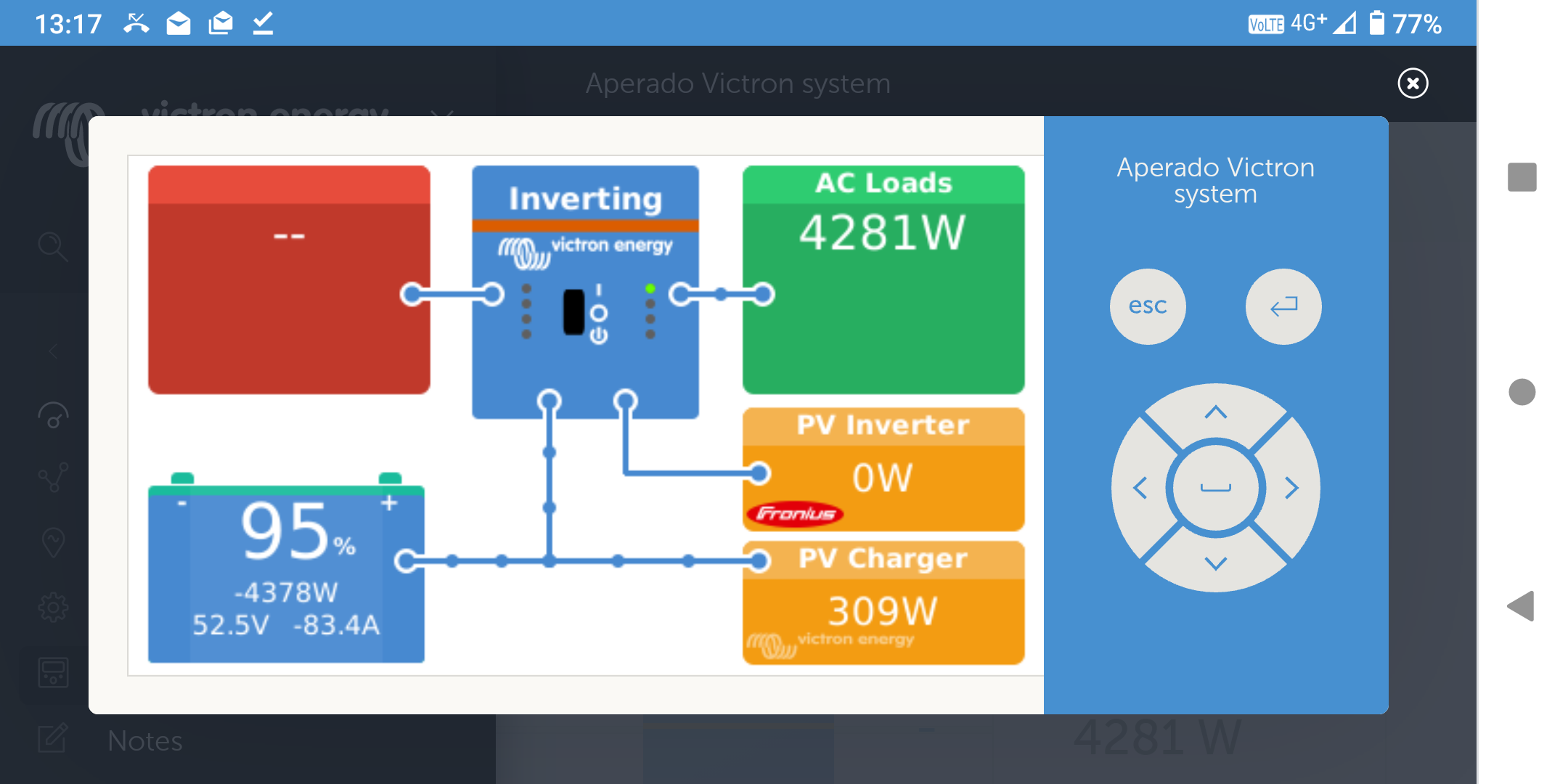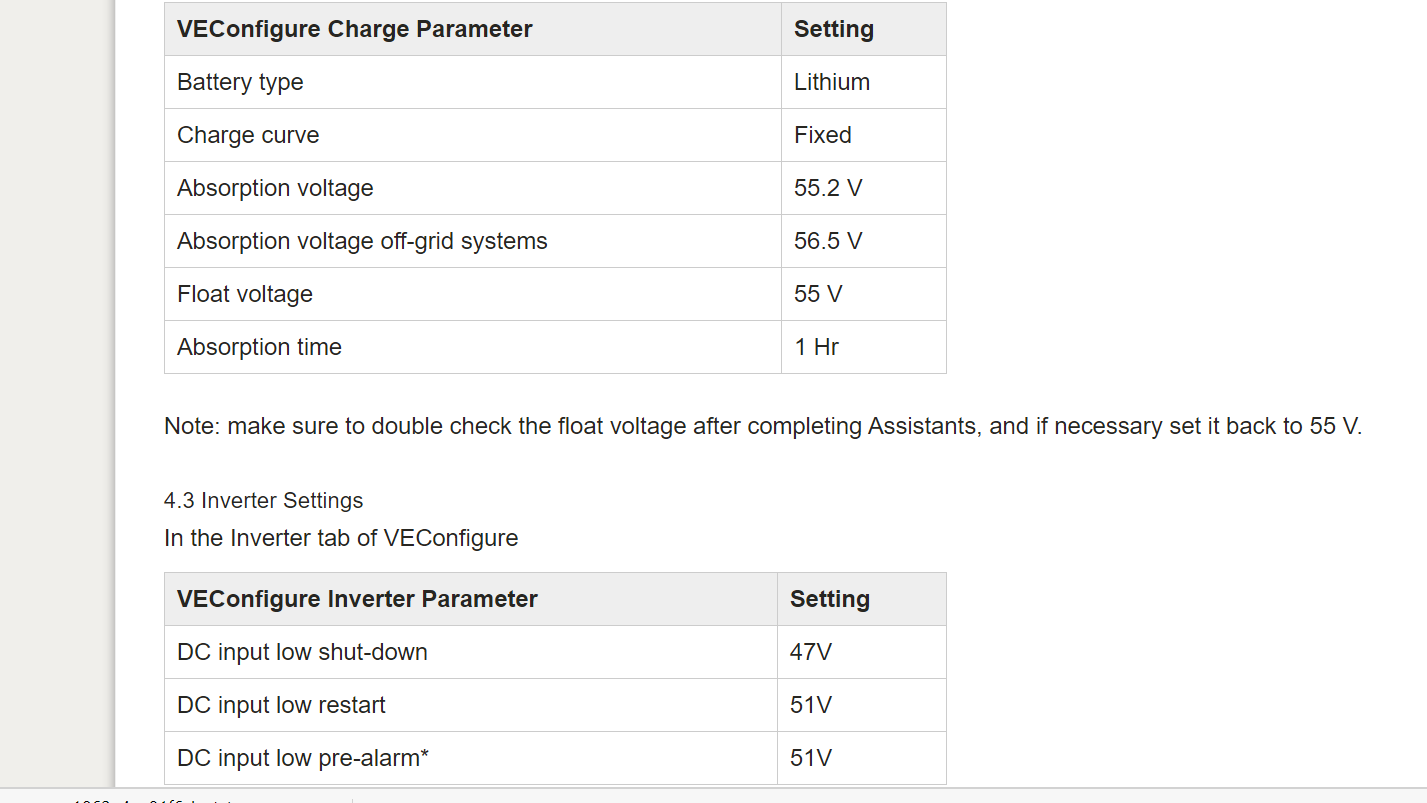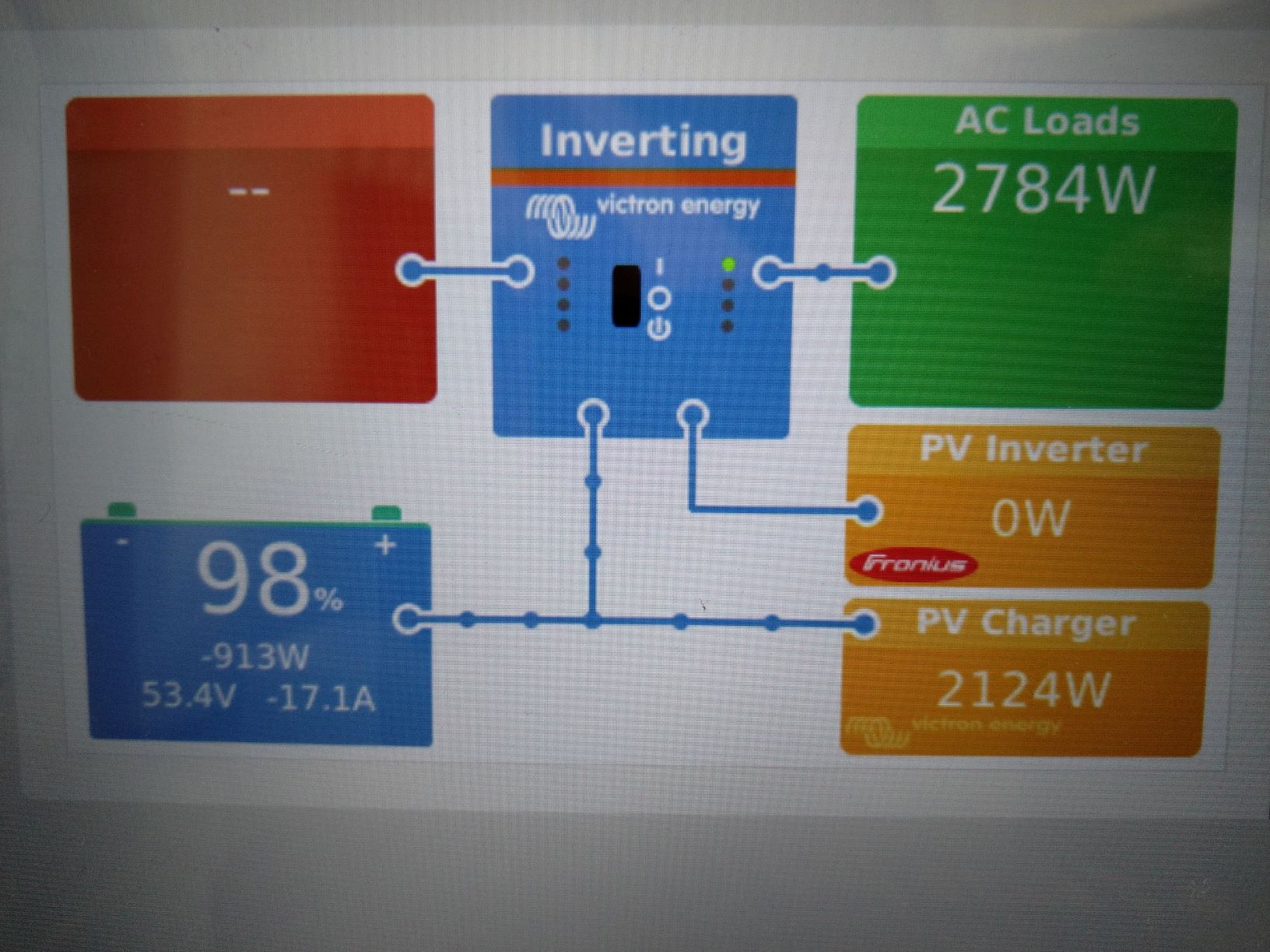 Hi!
Hi!
I have recently purchased a BYD LVS 20.0 battery and a Quattro 48/8000
My system is off-grid and has a Quattro 48/8000 with a FRONIUS PRIMO 3.0 on AC out, an MPPT 150/70 and a CCGX .
All setting are done according to your guidelines :
Victron & BYD [Victron Energy]
Here is the problem :
After the battery is fully charged TO 100% (around 13:00-14:00) the battery starts to discharge although there is plenty of sun to keep it charged. The MPPT keeps giving power but the Quattro shuts down the FRONIUS to 0W!!!
I can understand this happening if the battery voltage is above 55 V but this goes on even if the battery voltage goes down to 53V.
I am positive that this is not a BYD BMS issue. I tried connecting the AC GRID that I have as a back up and then the quattro started charging the battery as well immediately because it dropped the frequency back down.
I believe that the quattro should keep the fronius awake as long as the voltage is 55V or lower. Even if it has the frequency locked probably because of an overcharge insident (no error appeared) it should unlock after the voltage drops under the rebulk value. This value is 54.2V for my system but the frequency is still locked even reaching 53 V.
Why does it not unlock the frequency?
I am loosing power and the battery starts to discharge from 14:00 for no reason.


